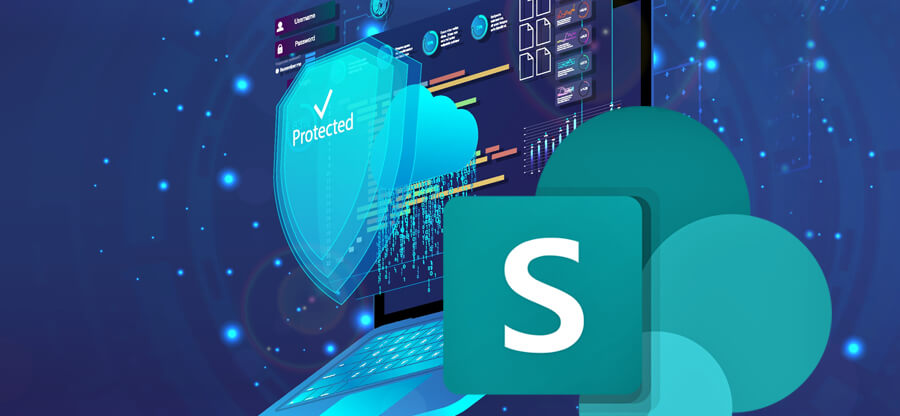Is SharePoint secure? This question is at the forefront of many organizations’ minds as they adopt this powerful collaboration platform. SharePoint offers a robust suite of features for managing documents, workflows, and communication, but its security is paramount. This guide dives deep into the intricacies of SharePoint security, exploring its fundamentals, data protection measures, authentication methods, threat prevention strategies, and best practices for ensuring a secure environment.
From understanding core security principles and exploring data encryption methods to navigating user authentication strategies and building a comprehensive incident response plan, this article provides a comprehensive overview of SharePoint security. We’ll also delve into compliance regulations such as GDPR and HIPAA, emphasizing their impact on securing sensitive data within SharePoint environments.
SharePoint Security Fundamentals

SharePoint, a collaborative platform for businesses, prioritizes data security. Understanding the core principles and features ensures the safety of your valuable information.
Security Principles
SharePoint employs several security principles to safeguard data.
- Least Privilege: Users should only have access to the information and resources they need to perform their jobs. This minimizes the potential impact of security breaches.
- Separation of Duties: Different users should be assigned different roles and responsibilities, preventing a single person from having excessive control over sensitive data.
- Defense in Depth: SharePoint utilizes multiple layers of security controls, including authentication, authorization, and encryption, to protect against various threats.
Security Features
SharePoint offers a comprehensive set of features to enhance security:
- Authentication: SharePoint uses various authentication methods, including Windows Authentication, Forms-based Authentication, and claims-based authentication, to verify user identities.
- Authorization: SharePoint uses role-based access control (RBAC) to define user permissions, allowing granular control over access to specific content and features.
- Encryption: SharePoint encrypts data at rest and in transit to protect it from unauthorized access. Data encryption is crucial for maintaining confidentiality.
- Auditing: SharePoint logs user activity, providing insights into data access patterns and potential security incidents.
- Security Policies: SharePoint allows administrators to define security policies, such as password complexity requirements and session timeout settings, to strengthen security posture.
Roles and Permissions
SharePoint defines several roles and permissions to manage access to information:
- Site Owner: The site owner has full control over the site and its content, including managing users, permissions, and site settings.
- Site Administrator: The site administrator manages user accounts, permissions, and site features.
- Designer: The designer creates and modifies site layouts, pages, and web parts.
- Contributor: The contributor can create, edit, and delete content within the site.
- Reader: The reader can only view content within the site.
Data Security and Privacy

SharePoint, a collaborative platform, holds sensitive data. This necessitates robust security measures to protect information and comply with privacy regulations. This section delves into methods for encrypting data, best practices for access controls, and the impact of compliance regulations like GDPR and HIPAA on SharePoint security.
Data Encryption Methods
Data encryption safeguards information by transforming it into an unreadable format, accessible only with a decryption key. SharePoint offers several encryption methods:
- Transport Layer Security (TLS): This protocol encrypts data during transmission between client and server, protecting it from eavesdropping.
- At-Rest Encryption: This encrypts data stored on SharePoint servers, protecting it even if the server is compromised. SharePoint utilizes database encryption to secure data at rest.
- File-Level Encryption: This method encrypts individual files stored in SharePoint, allowing granular control over access. SharePoint doesn’t inherently provide file-level encryption, but third-party solutions can be integrated.
Access Control Best Practices, Is sharepoint secure
Access controls are crucial for limiting data access to authorized users. Best practices include:
- Least Privilege Principle: Grant users only the minimum permissions needed for their tasks. This minimizes the risk of unauthorized access.
- Role-Based Access Control (RBAC): Define roles with specific permissions and assign users to those roles. This simplifies access management and ensures consistency.
- Multi-Factor Authentication (MFA): Require users to provide multiple forms of authentication, like passwords and one-time codes, to access SharePoint. This adds an extra layer of security.
- Regular Access Reviews: Periodically review user permissions to ensure they remain appropriate. This helps identify and remove unnecessary access, reducing security risks.
Compliance Regulations
Compliance regulations like GDPR and HIPAA impact SharePoint security by dictating data protection requirements.
- GDPR (General Data Protection Regulation): This EU regulation mandates stringent data protection measures for personal data. SharePoint must ensure data processing complies with GDPR principles, including consent, purpose limitation, and data minimization.
- HIPAA (Health Insurance Portability and Accountability Act): This US law protects sensitive health information. SharePoint environments handling protected health information (PHI) must adhere to HIPAA’s security and privacy rules, including access controls, encryption, and breach notification.
Securing your SharePoint environment is a continuous process that demands a proactive approach. By understanding the core security principles, implementing best practices, and staying vigilant against evolving threats, you can mitigate risks and ensure the confidentiality, integrity, and availability of your data. This guide serves as a roadmap to navigate the complexities of SharePoint security, empowering you to build a secure and reliable platform for collaboration and information sharing.
Questions and Answers: Is Sharepoint Secure
What are the most common security threats to SharePoint?
Common threats include unauthorized access, data breaches, malware infections, phishing attacks, and denial-of-service attacks.
How can I ensure compliance with GDPR and HIPAA in SharePoint?
Implement strong access controls, encrypt sensitive data, and ensure data retention policies align with regulatory requirements.
What are the best practices for securing SharePoint user accounts?
Use strong passwords, enable multi-factor authentication, and regularly review user permissions.






